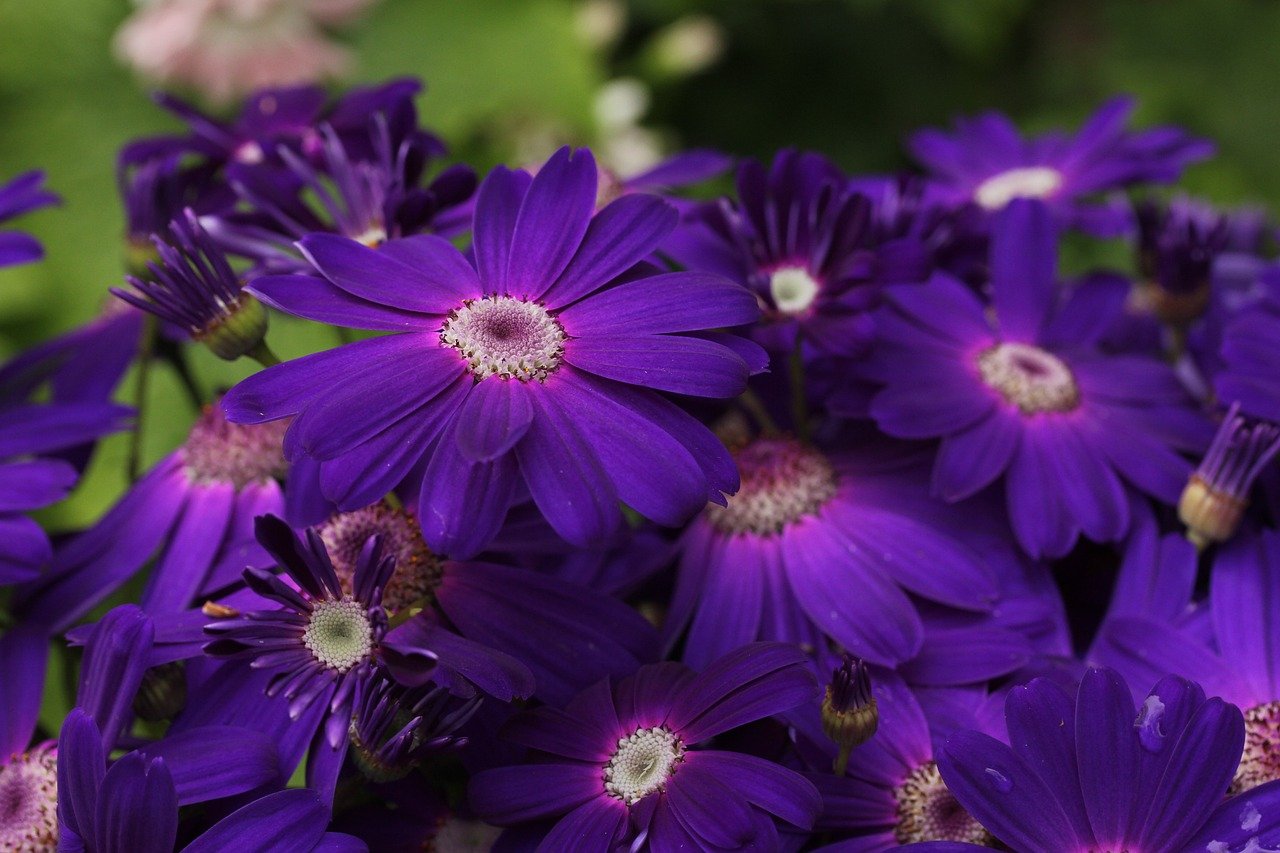Table of Contents
Gerbera daisies, otherwise called Transvaal, Barberton or South African daisies, are a species of flowering plants belonging to the family Asteraceae. They were first discovered in South Africa by a German botanist called Traugott Gerber, and their flowers symbolize joy, beauty, and cheerfulness. They are commonly used for decorations because they can survive in a vase for 14 days.
These plants grow well in acidic or neutral soil that remains moist but well drained. Many varieties that exist today are a result of hybridisation, and these perennial plants need to be exposed to sunlight to grow well. They come in several vibrant colours (including artificial ones like purple or blue) and can easily be grown as houseplants or in garden beds, making them a worthy addition to your garden!
Let’s explore 20 eye-catchinggerbera varieties that you can grow easily with the help of some gardening tips.
Gerbera Everlast
This is a series of semi-evergreen plants that come in different colours. These can be easily grown in pots and are quite compact. It can grow up to 35 cm tall and has dark green leaves and stems. It can grow in loam, sand or clay and grows better in sunny regions. Its UK hardiness rating is H3 (capacity to grow in different conditions) which means that it can comfortably grow in some coastal and mild regions. This series got its name from its ability to stay fresh for a long time without wilting!
1. Gerbera Everlast Pink
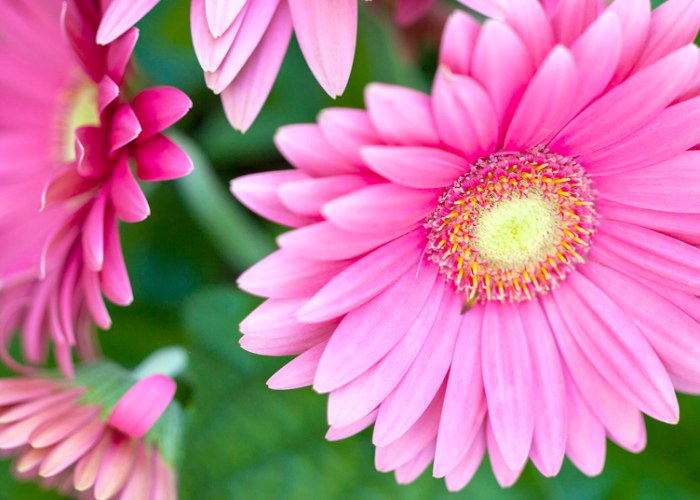
Otherwise called Amgerpink, it is a type of the everlast series, and this has beautiful magenta-pink flowers with a yellow floral disk (centre of the flower). It takes about one to 2 years to reach its full height, and it will spread about 10 to 50 cm.
2. Gerbera Everlast White
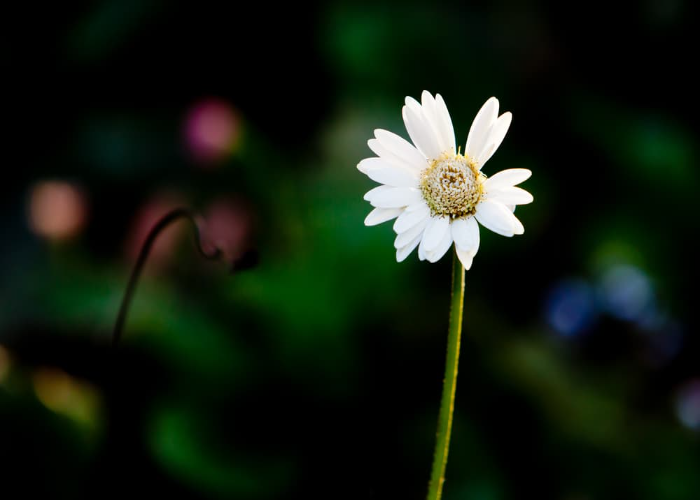
Also called Amgerbwhi, this is similar to Gerbera Everlast pink. However, it differs largely in appearance. It has beautiful white petals, which might have a tint of light pink sometimes. The floral disk is a pale yellow.
3. Gerbera Everlast Carmine
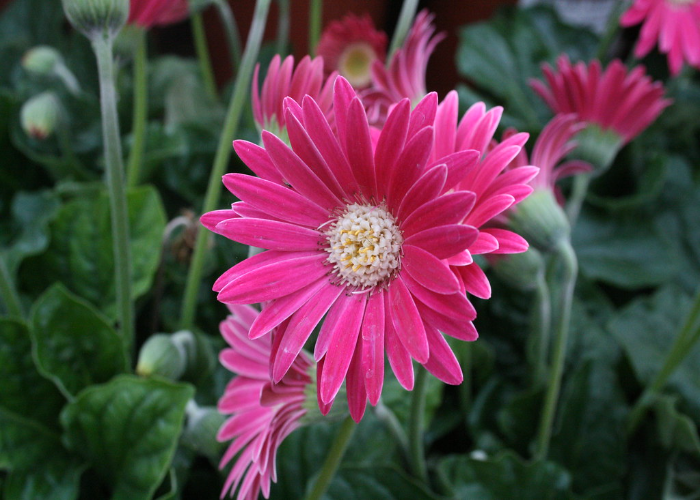
This is also called Amgerbcar, and its petals are a beautiful deep shade of pink/red. The floral disk is pale yellow similar to that of G. Everlast white.
Gerbera Jamesonii
Otherwise called Feisty, this is a beautiful variety which usually blooms during summer, and the maximum height and spread that this variety can have is 45 cm, slightly taller than the Everlast varieties. The time to mature is about 1 to 2 years. This variety grows well in chalky, loamy and sandy soil types. Generally, they can grow up to 10 to 30 cm and have a spread of 25 to 30 cm. The hardiness is H1c according to UK ratings which denote that they can be grown outside during summer, and the optimal temperature would be 5 to 10 degree Celsius. The revolution series are mentioned as they are the most preferred type of seeds used. They are one of the ideal varieties of gerberas for potting due to their uniformity in appearance.
4. G. Jamesonii Revolution Golden Yellow
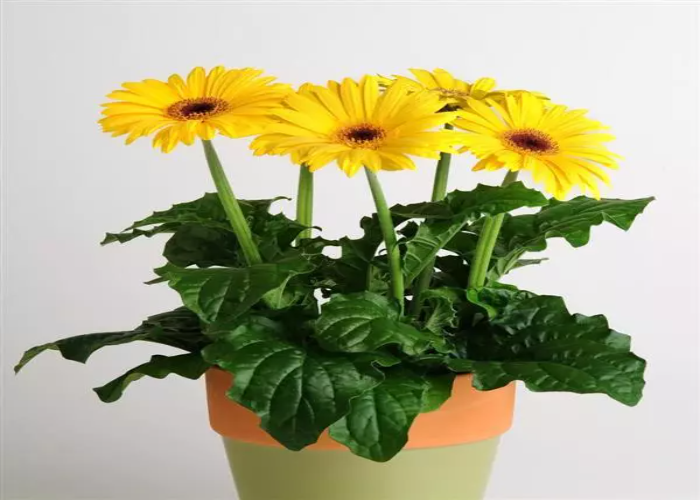
The specifications for this golden yellow variant remain the same as the general Gerbera Jamesonii type. The ray petals are bright yellow or golden with a dark brown or black floral disk in the centre. The florets are yellow as well.
5. G. jamesonii Revolution Deep Orange
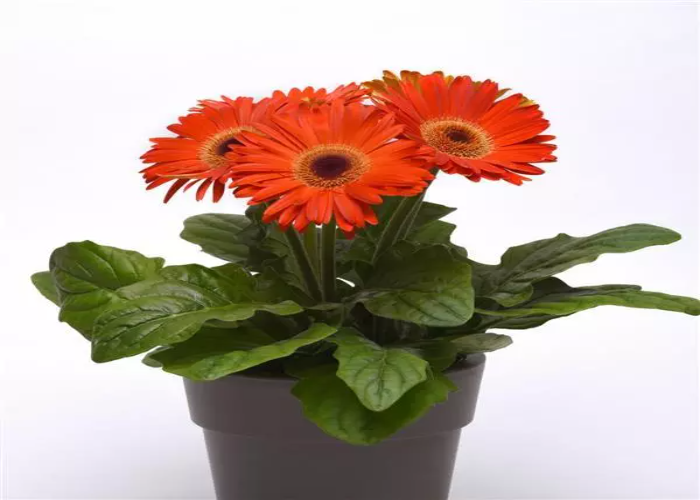
This variety has petals that are of an apricot orange colour with a dark brown or black floral disk. It blooms in late spring, summer or late summer. The height is smaller than the other varieties as it grows only up to 25 to 30 cm, and the spread/width is also only 15 to 20 cm.
6. G. Jamesonii Revolution Orange
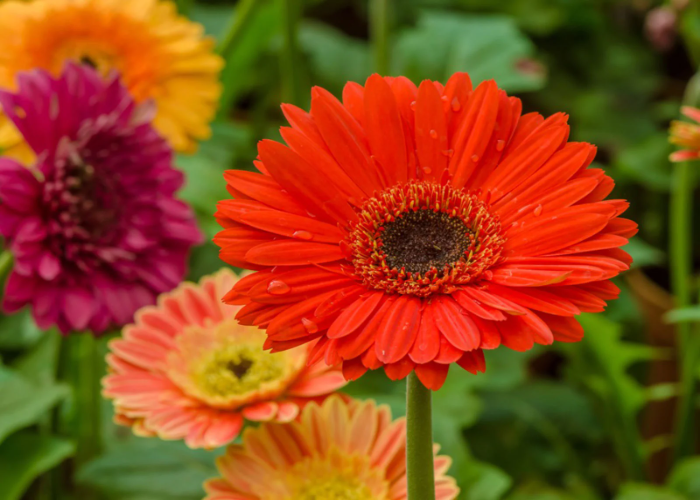
This variety has a pale yellow floral disk, a lighter orange shade of florets surrounding the disk and beautiful orange petals. The floral disk colour varies, and its height and spread are similar to other varieties in this series.
7. G. Jamesonii Revolution Bright Rose
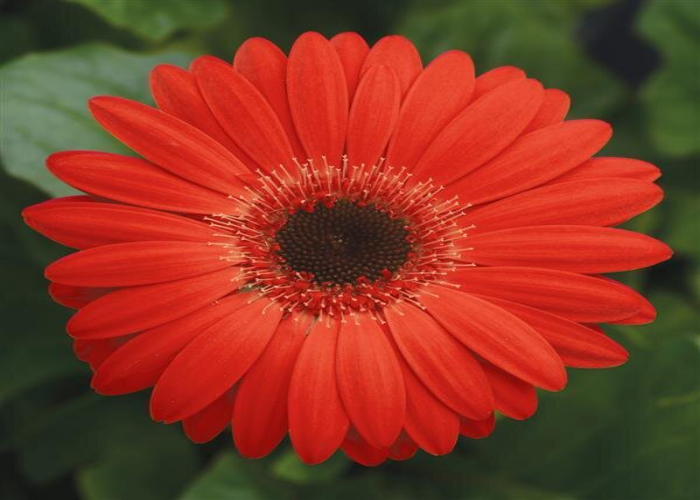
This variety has a pale yellow floral disk surrounded by darker orange or bright yellow florets and vibrant pink petals. This variety can be exposed to the sun partially.
8. G. Jamesonii Revolution Red
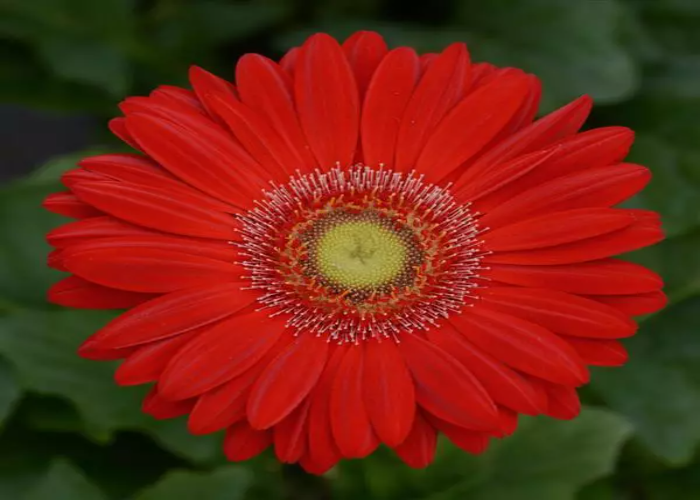
The flowers have a pale yellow floral disk with lighter red and white florets. It has beautiful red petals. The details of this plant are the same as the Bright Rose one. In appearance, it might look similar to G. Everlast carmine, but the plant’s height and spread are different.
9. G. jamesonii Revolution Bicolor Red Lemon
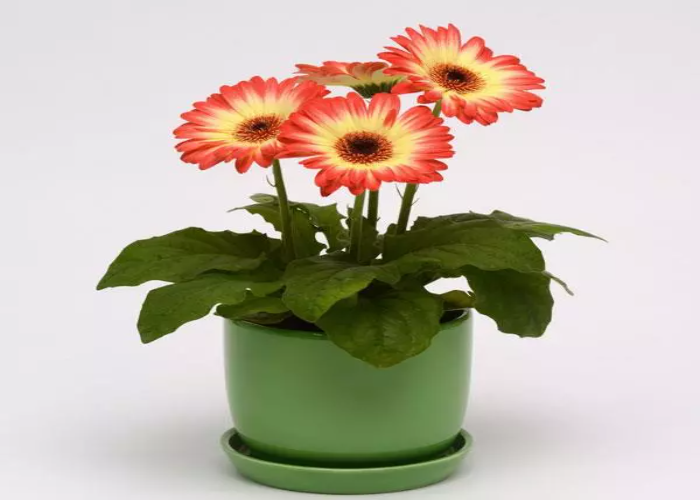
This variety looks special and eye-catching, as you can see in the image. This has a dark brown or black floral disk, lighter red florets and bicoloured petals. The inside edge of the petals has a light tint of lemon yellow, and the outside edges have a red shade.
10. G. jamesonii Revolution Bicolor Red White
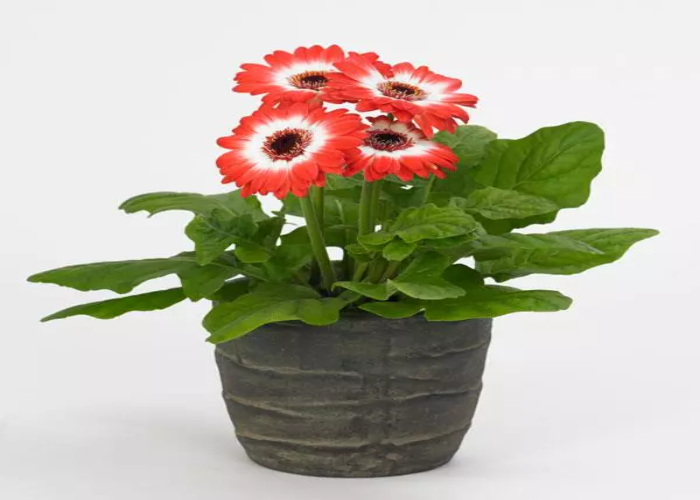
In this plant, the flowers have a darker floral disk, red-coloured florets and petals. However, the inside edge of the petals has a tint of white. This edge/band, however, is smaller than the circular band that is seen in the bicolour lemon variety.
11. G. Jamesonii Revolution Bicolor Rose White
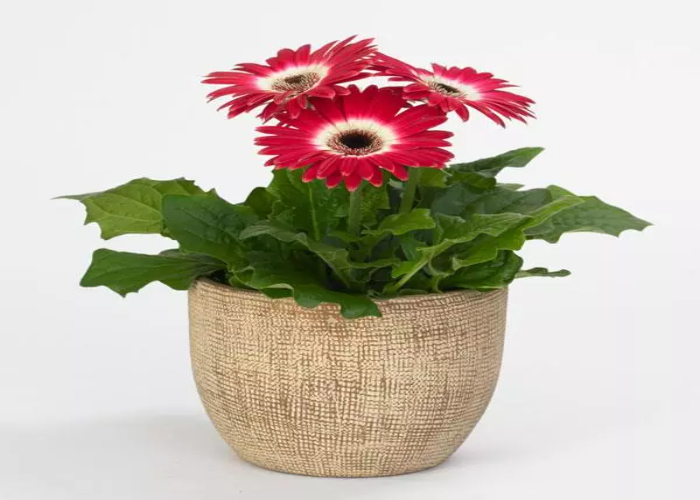
This is also another variation of the bicolour series where the unique aspects are the inner floral disk which is brown, and the florets are pink and yellow. There is a slight tint of yellow in the inside corner of the petals surrounding the florets and a broader white surrounding them. The major portion of the petals is bright pink.
12. G. jamesonii Revolution Bicolor Yellow Orange
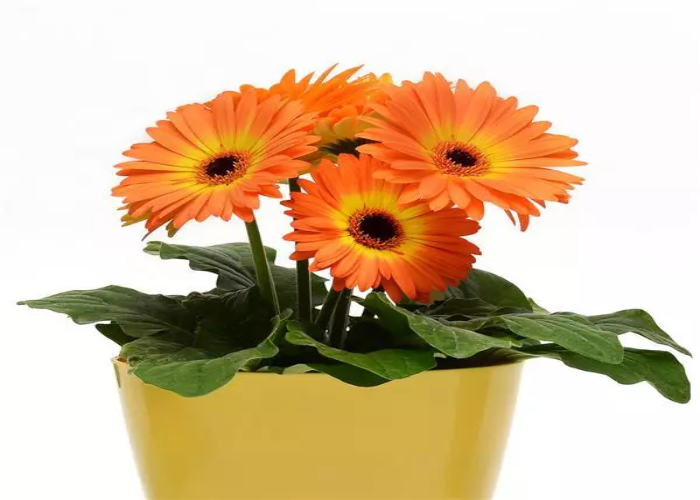
This variation is so aesthetic that the inner floral disk is dark brown, and the florets are orange. Just like the other bicolour variants, the petals of this flower also have 2 colours, the majority is orange, and in the inner edges surrounding the floral disk, there is a tint of yellow.
13. G. jamesonii Mega Revolution
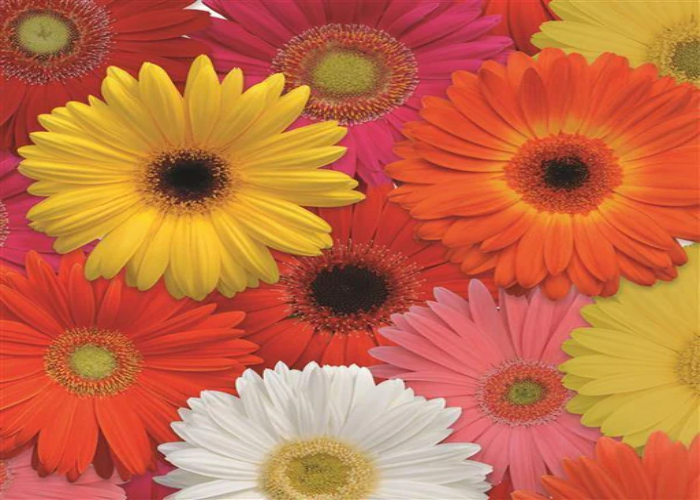
This variety has larger plants and comparably larger flowers. It is ideal to be grown in larger containers, and it comes in several colours, such as orange, red, white, bright pink, rose, yellow and red. The inner floral disks might be light or dark, depending on the specific variety chosen.
Gerbera Garden Jewels
These are tough evergreen plants which have strong resistance to pests or diseases. The interesting aspect of these flowers is that they have double-layered petals. These double-layered petals can be bicoloured as well. Their maximum height is about 30 to 35 cm. They can bloom up to 100 flowers as the stems are quite tall and can support the weight of the flowers as well. They can be exposed to a moderate amount of sun. Their hardiness rating is H5, and this indicates that they can grow even in the UK’s harsh winter.
14. Gerbera Garden Jewels Frosted Hot Pink
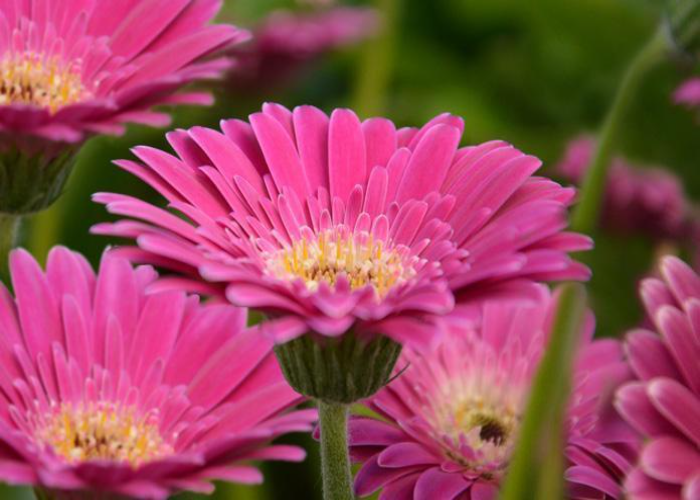
This variety has a yellowish-green floral disk with slightly darker yellow florets. There are 2 sets of petals, one small and enclosed within the other larger petals. Both sets of petals are bicoloured, where the insides are pink, and the outer corners are white. The petals are a bright magenta pink and will look absolutely stunning in a vase or as decor.
15. Gerbera Garden Jewels Pink
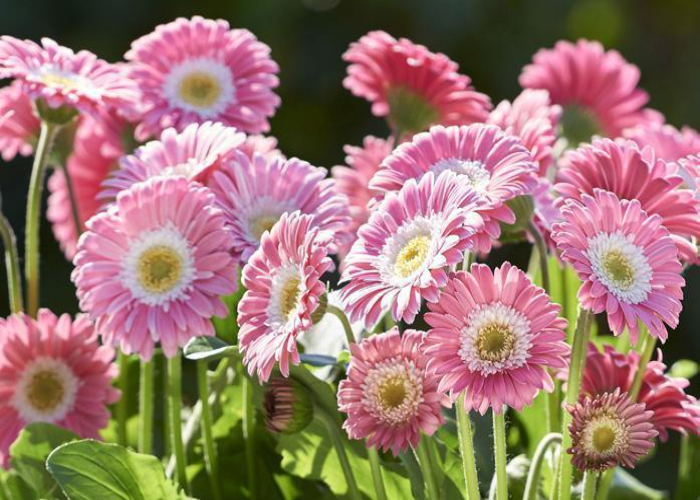
This variety does have a similar floral disk, but the florets are not a darker yellow. This also has 2 sets of petals, and the inner ones are more crowded and are a light shade of pink, whereas the outer ones are a deeper shade of reddish pink. However, this is a deciduous variety and not an evergreen one. This might grow very tall, around 40 to 45 cm.
Gerbera Garvinea
This variety of gerbera blooms during spring, summer and autumn and has a UK hardiness rating of H3. They also need to be sheltered from the sun, and they grow up to be a maximum of 50 cm tall and 50 cm in spread. They might grow well in clay, sand or loam, and these mediums should be well-drained but moist for ideal growth.
16. Gerbera Garvinea Fleurie
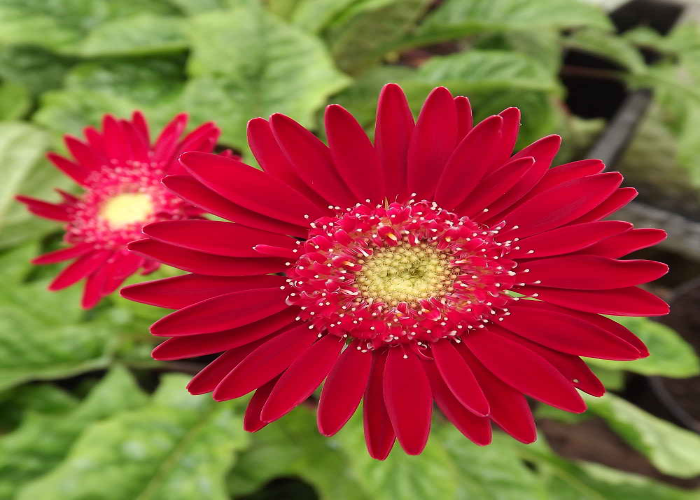
This specific variety called Fleurie has 2 sets of petals with a unique floral disk and florets. The inside of the floral disk is red, surrounded by orangish-yellow florets, which are surrounded by another set of reddish-white florets. The petals are a beautiful red shade. This plant, however, can be affected by chrysanthemum leaf miners, so special care needs to be given.
17. Gerbera Garvinea Sweet Surprise
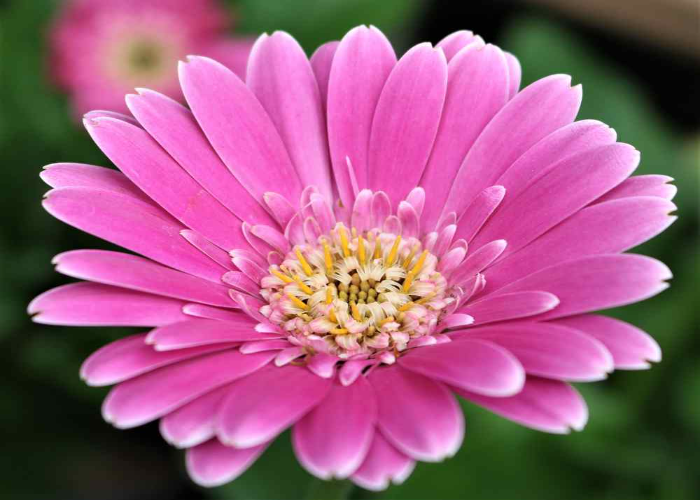
This variety’s outer petals have a beautiful lavender shade, while the smaller inner ones are a soft pink to whitish shade. The floral disk is yellow or brown, and it also has small white florets. This gives it an appearance of a gradient which looks absolutely stunning from a distance.
18. Gerbera Jaguar
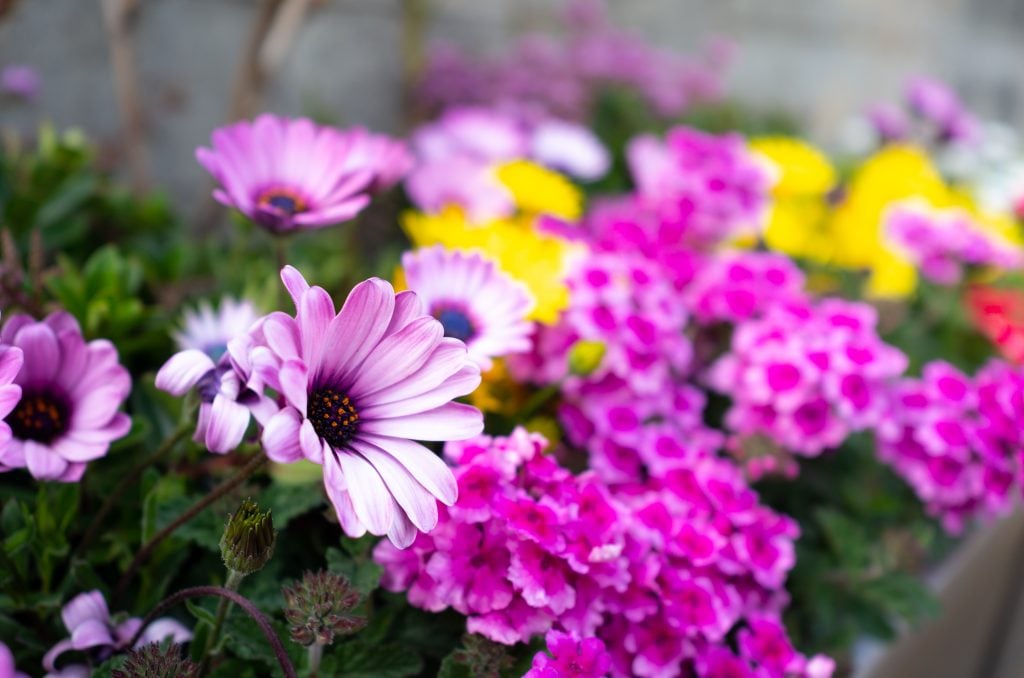
This variety can grow up to 25 to 30 cm tall and have a smaller width/spread of around 18 cm. They were artificially created for 2 main purposes, which are early blooming and uniformity in appearance. Due to these characteristics, this variety would be ideal for flower shows or displays in parks, etc.
Gerbera Sakata
This variety was developed by Sakata of Yokohama, Japan. These are ideal for growing in pots and containers as they are very short. They are around 15 to 20 cm, and this series is one of a kind because of its small size, and there is a variant called super-dwarfs which are even smaller. These can even be grown in 3.5-inch pots. Using this series as the basis, other variants have been developed, such as Festival Mini (super dwarf), Durora, Majorette and Festival.
19. Gerbera Durora
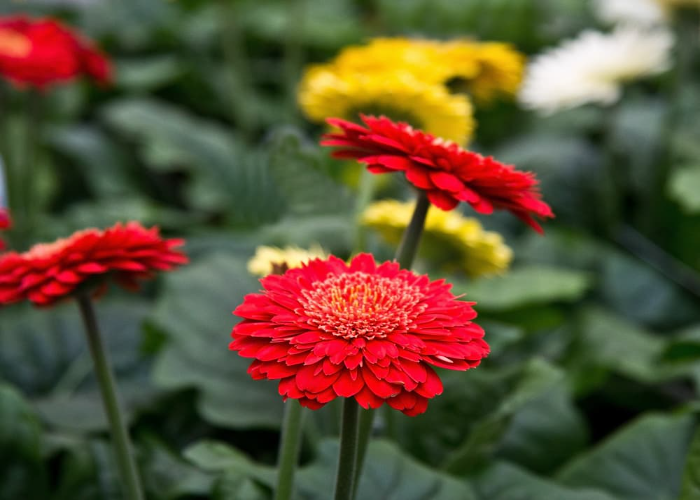
This variety comes in shades of yellow, soft pink, red and white. The inner floral disk is neon green, and the surrounding florets are a similar shade as the petals. However, the florets arch over the floral disk, almost covering it. This aspect of it gives it a distinctive appearance.
20. Gerbera Majorette
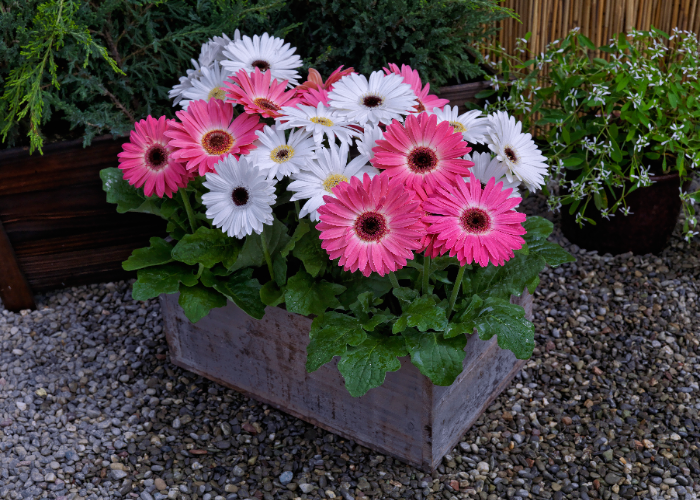
This variety has large flowers and comes in striking colours such as white, pink, red, yellow, orange and bi-coloured. The floral disk is very visible and quite big compared to other variants, and so are the petals. In almost all the shades, the florets are yellow in colour with a darker floral disk.
Secrets to Gardening Gerbera Varieties
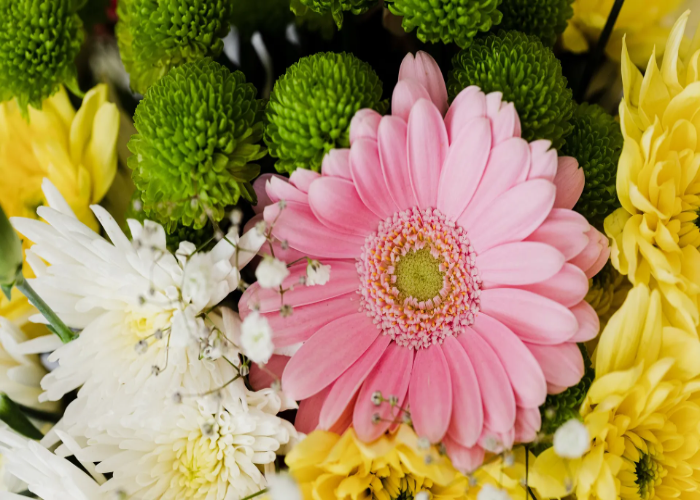
1. Weather
These plants can be grown outside all around the year, but they need to be in mild weather conditions, and they should also not be exposed to direct sunlight. The temperature has to be maintained around 10 to 20 degree Celsius. However, some gerbera varieties can sustain themselves even in the United Kingdom’s harsh winter.
2. Planting
They can be planted in small pots or in the garden bed. Since each gerbera will grow up to 30 to 60 cm, they should be spaced around 1 foot apart when planted. These are deep-rooted plants, so the pot needs to be deep as well. They will grow successfully only in highly fertile soil, and it needs to be kept moist but well drained.
3. Pruning/trimming
When you are trimming the wilted flowers, make sure to cut off the whole stem a little above the base. They are susceptible to pests like Aphids, leaf miners, etc., and in winter, they might get molds, so special care needs to be given in winter.
Now that we know how to take care of gerberas let’s find out which ones we love the most!
Summing Up
These 20 Gerbera varieties (or some of them) will be a great addition to your garden as you have a wide range of choices to pick from. Although there are different series and varieties of the Gerbera species, there are only minor differences among them. The majority of these differences are in the colour of their petals and the type of flower each plant produces. They have more or less similar requirements in terms of watering and sunlight exposure and have similar hardiness levels, but all of them come in eye-catching colours such as red, white, yellow, pink, etc.
Make sure to provide them with fertile and well-drained soil so that they grow well. If you are unsure of what to choose, starting with one that might be easier to maintain is always good. Now you have the basic information required to select and grow them.
Let’s start planting!

